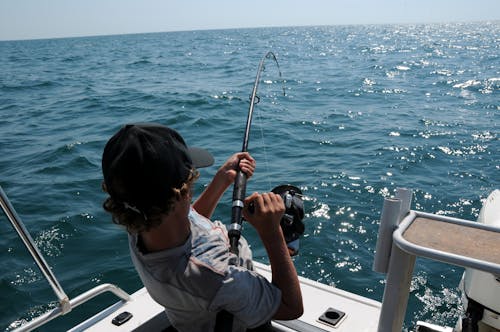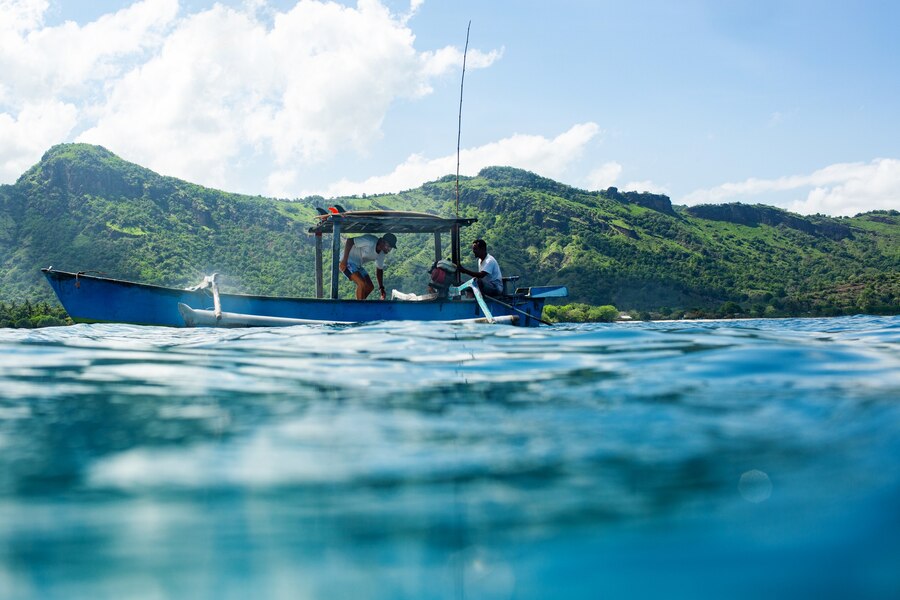Planning Your Fishing Trip in Newport: Weather, Gear, and Expert Tips
Newport, Oregon, a hidden gem on the Pacific Northwest coast, offers some of the finest fishing experiences for both beginners and seasoned anglers. Whether you’re after prized salmon, halibut, rockfish, or Dungeness crab, Newport has something to offer for everyone. Planning a successful fishing trip here, however, involves more than just dropping a line in the water. From understanding the weather to selecting the right gear, being prepared will make your trip both rewarding and enjoyable. Here’s a comprehensive guide to help you plan your fishing adventure in Newport.
Understanding Newport’s Weather Patterns
The first step to a great fishing trip in Newport is knowing what to expect from the weather. The Oregon Coast has a temperate maritime climate, meaning conditions can change rapidly. While summers (June to September) are generally mild, with average highs ranging from 60°F to 70°F, mornings often bring a thick marine layer of fog that burns off by mid-day. During the winter months, storms become more frequent, with heavy rain and strong winds being common from November through March.
Fall (September to November) can be a fantastic time for fishing, as cooler temperatures bring a variety of fish species closer to shore. Spring also offers favorable conditions for species like Chinook salmon, but it’s vital to check for weather updates before heading out. Wind and sea conditions play a huge role in determining which days are best for ocean fishing trips.
For the latest conditions, be sure to check local marine forecasts or speak with local fishing guides who are well-versed in Newport’s microclimates. Strong winds, rough seas, or heavy rain can make ocean fishing difficult or even unsafe, so always prioritize safety.

What Fishing Gear to Bring
Choosing the right gear for your Newport fishing trip depends on what you’re targeting and whether you plan to fish offshore, from the shore, or in Newport’s famous Yaquina Bay. Here’s a quick rundown on what you’ll need:
- Fishing Rods and Reels:
– Offshore fishing: Heavy-duty rods, usually 7-9 feet long, paired with strong reels capable of handling larger fish like halibut, lingcod, and tuna. A 40- to 50-pound test line is recommended for these deep-sea species.
– Inshore and bay fishing: Lighter tackle, like a 6-7 foot medium-action rod, works well for rockfish, sea trout, and salmon in the bay or estuary areas. A 10- to 20-pound test line should suffice.
- Crab Traps:
– If crabbing is on your agenda, Dungeness crab pots or ring traps are essential. Newport’s Yaquina Bay and the nearby jetties are prime locations for this tasty catch. Don’t forget to bring a crab gauge to ensure you meet the size regulations!
- Bait and Lures:
– For salmon and steelhead, salmon eggs or cut herring make excellent bait, while spinners and plugs also attract their attention.
– Halibut and rockfish: Use baitfish like herring, squid, or artificial jigs for best results.
– Crab bait: Chicken, fish carcasses, or other seafood work well in crab traps.
- Safety Gear:
– Oregon’s coastal waters can be unpredictable, so life jackets are essential, especially if you’re going offshore. Also, bring non-slip boots, waterproof clothing, and polarized sunglasses to deal with the elements.

Choosing Between Charter or DIY Fishing
A key decision in planning your fishing trip is whether to go out on your own or book a charter. Both have their advantages, and your choice will depend on your experience level and what you’re hoping to catch.
Charter Fishing:
– Newport offers a wide selection of fishing charters that cater to all experience levels. Booking a charter is a great option if you’re new to fishing or unfamiliar with the local waters. Experienced captains know the best spots, have top-of-the-line gear, and can help you target species that are in season. Charters also take care of necessary permits and provide guidance on regulations, so all you need to do is show up and fish.
– Offshore charters typically target salmon, halibut, tuna, or rockfish, while inshore charters are ideal for crabbing and bay fishing. It’s a hassle-free option with expert guidance, making it perfect for tourists or casual anglers looking for a successful day on the water.
DIY Fishing:
– If you’re more of a do-it-yourself angler and have your own gear, Newport offers plenty of opportunities for solo fishing. You can cast from the shore along the jetties or piers, or take a small boat into Yaquina Bay. Fishing from the shore is great for rockfish, surfperch, and sea trout, while the bay is well-known for salmon and crab. If you prefer a more serene experience, head to nearby lakes like Big Creek Reservoir, where you can fish for stocked trout.
– Keep in mind that Oregon requires anglers 12 years and older to have a valid fishing license, and crabbing or clamming also requires permits. Be sure to familiarize yourself with local fishing regulations, including size limits, seasons, and protected species.

Expert Tips for a Successful Trip
- Timing is Everything: Early morning and late afternoon are often the most productive times for fishing in Newport, as fish are more active during these cooler hours. For crabbing, the best time is during slack tide when the water is calm, and the crabs are less likely to be swept away by currents.
- Know the Tides: Tide levels play a significant role in fishing success, especially in bays and estuaries. High tides bring fish closer to shore, while outgoing tides often make for great crabbing. Check local tide charts before heading out.
- Local Knowledge is Key: Talk to local anglers or stop by tackle shops like Englund Marine & Industrial Supply for insider tips on what’s biting and where. Don’t hesitate to ask charter captains for advice—even if you’re not booking a trip with them, they’re often happy to share tips.
- Stay Flexible: The weather can change quickly along the Oregon Coast, so having a backup plan—like visiting the Oregon Coast Aquarium or exploring local tide pools—can help ensure your trip is enjoyable, even if fishing conditions aren’t ideal.
- Practice Catch and Release: While Newport is known for its abundant fishing, practicing catch-and-release for non-target or undersized species helps preserve fish populations and supports the overall health of the ecosystem.
The Best Time of Year to Fish in Newport
The ideal time to fish in Newport depends on what you’re targeting. The summer months are peak season for offshore species like tuna, halibut, and Chinook salmon. Spring and fall offer great opportunities for salmon runs in Yaquina Bay, while winter is the prime time for Dungeness crabbing. Rockfish and surfperch can be caught year-round.
Planning a fishing trip to Newport requires a mix of preparation, local knowledge, and the right equipment. Whether you opt for a deep-sea charter or a relaxed day of crabbing in the bay, Newport offers diverse fishing opportunities that promise excitement and the chance to connect with Oregon’s coastal beauty. By considering the weather, packing the appropriate gear, and following expert advice, you’ll set yourself up for a successful and memorable fishing adventure.
Let’s Get Started

